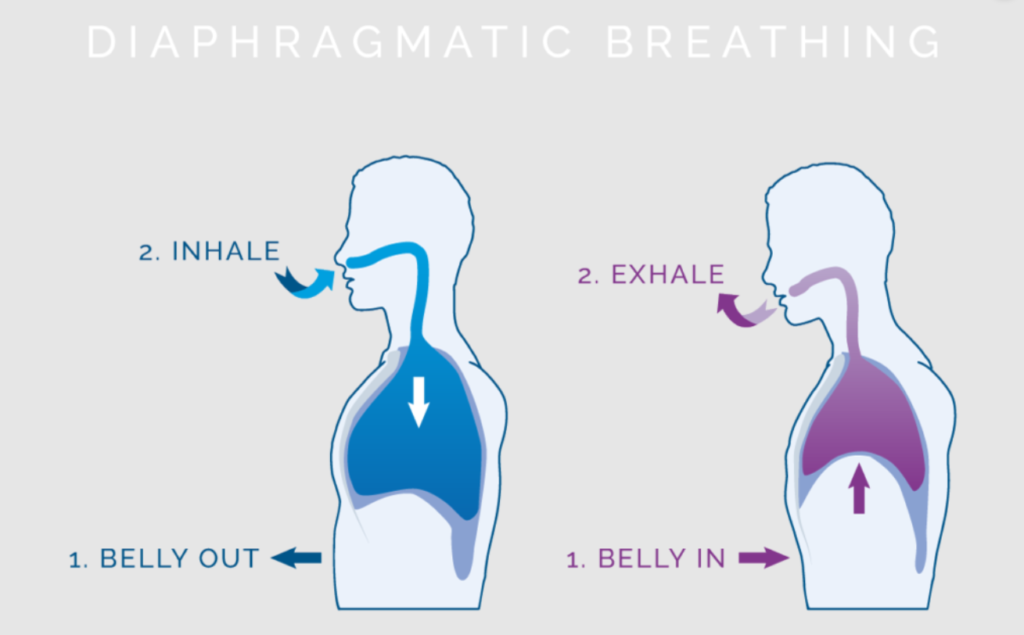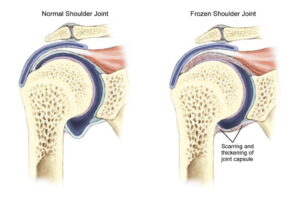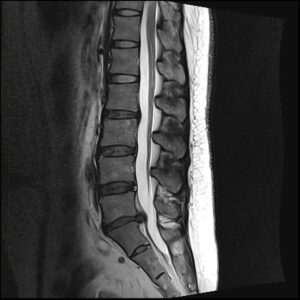The diaphragm is a wide, thin muscle that sits at the bottom of the thoracic cavity and attaches to the sternum, ribs and lumbar vertebrae. It is the primary muscle used for breathing and is very important to both our cardiovascular and nervous systems.
In a resting state, your body naturally relies on the diaphragm to breathe. As this thin muscle contracts, it lowers and causes the ribs to expand. This process creates negative pressure in the chest, which pulls air into the lungs. When the diaphragm relaxes and returns to its resting state, the air leaves the lungs and the ribs lower. Contraction of the diaphragm increases pressure in the trunk, which triggers relaxation through the abdominal muscles and the pelvic floor. As we exhale and reduce the pressure throughout the trunk, the core and pelvic floor muscles can contract and move inward around the pelvis and abdomen. This piston-style relationship between the diaphragm and the pelvic floor muscles drives the function of our “core” as a unit and can affect anyone, regardless of gender, diagnosis or medical history.
Any dysfunction or pain in the trunk, lumbar spine, abdomen or pelvis can cause interference with our natural breathing state and our ability to utilize our core and pelvic floor muscles, which provide stability for the rest of our body. Examples of limitations can include, but are not limited to:
- General Anxiety Disorder or Life Stressors
- Low back pain
- Pelvic or SI joint pain
- Decreased rib mobility
- Pelvic floor dysfunction in men or women
- Impaired respiratory function or respiratory illness (COPD, Chronic cough, Emphysema, COVID)
Improper breathing patterns have also been associated with mobility deficits and movement dysfunctions in patients with low back pain and SI joint pain.
Increased diaphragm activity and slow, purposeful breathing stimulates the vagus nerve, which is responsible for calming our nervous system. It helps to decrease our state of arousal and control our “fight or flight” response. When we use quick, shallow breaths, our heart rate and blood pressure rise, as do cortisol and blood glucose levels in preparation for our “fight or flight” response to any stimulus.
We can apply this breathing technique in physical therapy interventions for pain modulation, muscle and joint tightness, low back pain, pelvic floor physical therapy, and more. Breathing with your diaphragm can increase relaxation throughout the whole body and increase flexibility or tolerance to stretching. When you take deep breaths, the core and pelvic floor muscles can relax, which then makes them easier to fully engage when performing a core or pelvic floor contraction.
Using any type of targeted breath that improves the function of the diaphragm has been proven to stimulate a calming response in the nervous system, improve function of our core and pelvic floor muscles, improve breathing efficiency, improve sleep, decrease chronic pain, and decrease tension throughout the shoulders and neck.
So, how do you do it?
Get into a comfortable position, sitting, standing or laying down. Place your hands on the lower part of your ribs, along your side, or over your belly. As you inhale, you should think about breathing in and down into your abdomen or pelvis. Your ribs and belly should expand in all directions. Breath in through your nose for at least 6 seconds before slowly letting your breath out through your mouth. Continue to breathe in and out slowly and fully.
If you feel like you may be struggling with your breathing or have any other symptoms that were mentioned above, make an appointment with one of our skilled PT’s today!







